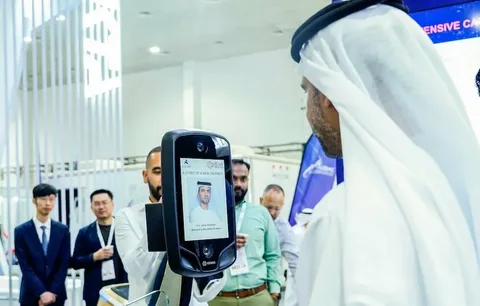From October 2025, biometric checking will become streamlined for tourists coming from the UAE to Europe as the European Union will launch a new Entry/Exit System (EES) across 29 Schengen countries. This digital upgrade in border control aims to improve terminal security, speed up immigration processes, and keep travel data for non-EU nationals, inclusive of UAE passport holders. Your travel throughout Europe-from Paris to Rome, Amsterdam, and everything in between-is about to undergo full-scale digitization.
Biometric checks will include fingerprinting and face recognition, recorded during your first visit after the EES’ entry. The measures will curtail identity theft, fraud, and overstaying, leading ultimately to the broad use of e-gates for faster border crossing. As European tourism continues to grow and Schengen Area regulations evolve, it will be essential for tourists from the UAE to understand and fit into this new travel order.
Read More: Euro Surges High: Trump’s Tariff Delay Sparks Global Forex Buzz
The EES Will Change Europe Travel for UAE Tourists
The Entry/Exit System (EES) will digitally record entry and exit information for every UAE tourist and any other non-EU national entering Schengen countries. This system will check their biometric data (fingerprints + scans of facial images) eliminating any manual processing with passport stamping. The data will be stored securely for a period of three years or up until the passport expiration date.
On your first trip to Europe after EES launch, your biometrics will be registered. On further trips, only facial scans would be needed-unless undergoing a passport change. The 90/180 days rule will also be automated by this system to track and prevent overstaying.
France, Italy, Germany, and the Netherlands-which are the famous Schengen destinations-are set to embrace the full application of EES. However, the manual passport checks would continue in Ireland and Cyprus, as they do not belong to the EES network.
What to Expect at the Borders of Europe with a New System
The biometric checks may extend the first operational hours at airports and on land crossing, with travelers gearing into these early steps. Yet, thereafter, onward to full-scale applications across Europe, EES would smooth border exit through kiosk automation and e-gate, reducing any human intervention.
For UAE tourists, this means greater transparency, ease of re-entry into Europe, and fewer disputes over lost stamps or potential visa offences. Border officials will real-time assess entries, exits, and refusals, using proper travel data.
Hence while the first trip post launching could be an exhausting one due to registration, the next will definitely be the fastest and smoothest with the E-gate and system under digital control.
Also Read: BYD Shares Plunge as Price War Grips China’s EV Market
ETIAS: Another Big Requirement to Follow Biometric Checks
The core processing of EES includes biometric checks. While on the other hand, in mid-2025, the Electronic Travel Information and Authorization System (ETIAS) will be rolled out by the EU. Pre-travel online authorization is a concept with obligatory standing for all non-EU nationals. It including UAE citizens, even if they are visa exempt.
The ETIAS procedure will cost €7 and will be valid for three years with multiple entries allowed into Schengen. It will work in conjunction with all ETIAS and EES data, creating a secure consolidated travel tech network across Europe.
This creates a new landscape for the European tourist with the EES and ETIAS . It is safe and meets the regulations without disruptive traveling of visitors coming from the UAE.
Travel Trends & Benefits for UAE Tourists in 2025
If there is a mix of biometric checks put in place together with ETIAS. The future of Europe travel for UAE tourists will be safe and technology-rich. These changes correlate with travel trends that are burgeoning in 2025. With a focus on wellness getaways, short city breaks, and value-for-money experiences.
UAE travelers can look forward to re-entry that is faster and accurate from the first ETIAS trip. Accurate tracking of their days under Schengen visa and reduced chances of errors at border control. Digital records offer better control over your travel data. Giving UAE tourists peace of mind and more time to enjoy their holidays.
As both systems take hold, European travel is being significantly reshaped by the joining of biometric checks, e-gates, and real-time alerts. The new era of border crossing would be smarter and more secure.
For More Trending Business News, Follow Us 10xtimes News






